Background
At any given time, Stanislaus State must comply with a variety of existing federal (e.g., CDC, OSHA, FDA), state (e.g., Governor, Cal/OSHA, CSU), as well as county-specific (e.g., Stanislaus and San Joaquin County Departments of Public Health) related policies, protocols, and practices. The Infectious Disease Response Team (IDRT) is established to be a representative group of key campus experts who will be better informed about infectious disease-related policies that impact our campus, in conjunction with campus-specific and county-specific data that are used to monitor and track conditions on campus and in our region in order to provide feedback regarding campus plans to prioritize the safety and of all students, employees and visitors to our campus.
- The purpose of the IDRT is to utilize the best and most current scientific information and data to always safeguard the health, safety and well-being of all Stan State students, employees, guests and our community.
- Involve and mobilize expert external consultants including public health officials as well as campus experts to better inform, educate, and seek feedback from key constituency group leaders as needed regarding impacts to campus operations.
- Better understand, accurately track, and utilize a range of critically important data (e.g., campus-specific and relevant county data) in order to provide feedback and input to the President and Cabinet that will enhance our ability to pivot or modify Stan State’s formal infectious disease plans and operations as conditions change on campus and in our communities.
- Continue to provide feedback and collaborative support to enhance and improve communication processes across the campus and with our communities.
Adhoc Team
The ad hoc team supports the Emergency Operation Center and Business Continuity directives to discuss when and how the University should respond to public health concerns. The team’s intent is to familiarize likely responders with each other, establish effective lines of communication, learn about one another’s areas of expertise, and discuss scenarios under which the University may need to respond to an infectious disease issue.
Public Health Response
The University Infectious Disease Response Team is made up of representatives from Safety & Risk Management, the Student Health Center, Housing, University Police, Public Affairs, Faculty, Student Affairs, and the Dean of Students.
IDRT Members:
- Aaron Allaire
- Evelyn Calvillo
- Heather Dunn Carlton
- Adam Deniz
- Amy Diaz
- April Dunham-Filson
- Brittany Fentress
- Belinda Garcia
- Hugo Hernandez
- Sarah Sweitzer
- Sergio Mazon
- Dawn McCulley
- Juliana De Melo
- Laura Roberts
- Marla Seacrist
- Alvaro De Sousa
- Kristina Stamper
- Misty Strode
- Jen Sturtevant
- Amanda Theis
- Heather Pearson Villeda
- Suzanne Whitehead
- Guadalupe Linares
- Renee Giannini
- Jessica Bettencourt Wojciechowski

CDC Respiratory Illnesses Data Channel
View the CDC Respiratory Illnesses Data Channel for current details on the respiratory illness activity in California and other areas in the U.S., including flu, RSV and COVID-19.
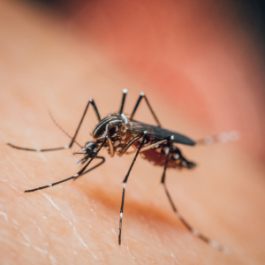
Mosquito-Borne Diseases
Two invasive (non-native) mosquito species have become established in many areas of California that can transmit viruses to people when they bite. These include: West Nile Virus, Dengue, Chikungunya and Zika.
- Mosquitoes are most active in early Spring, peaking in June-August, and into Fall until weather gets cooler.
- They can bite in the daytime or at night, indoors or outdoors, and are most active at dusk and dawn.
- Local Mosquito Control Districts may conduct aerial spraying to control and reduce the number of mosquitos, reducing chances of virus transmission.
Learn how to stay protected from mosquitos using the resources below.
-
Use mosquito repellent on clothes and exposed skin when going outdoors (especially at dawn and dusk), and wear long sleeves and pants for extra protection.
-
Keep mosquitoes from breeding near your home by draining standing water around your yard.
-
Visit the Turlock Mosquito Abatement District web page and the San Joaquin County Mosquito Abatement District web page for more information on prevention, spray alerts, requesting service, and reporting issues.
-
View Turlock Mosquito Abatement District and San Joaquin County Mosquito Abatement District data to learn of West Nile Virus concerns in your area.
- Chikungunya Disease Information
- Dengue Disease Information
- West Nile Virus Information
- Zika Virus Information
Downloads
- Mosquito Species by County Map (PDF) - Updated Oct. 3,2025
- CDC - How to Protect Yourself from Mosquitos Poster (PDF)
- CDC - Mosquito Control: What You Need to Know About Aerial Spraying Flyer (PDF)
Local, State & Federal Guidance
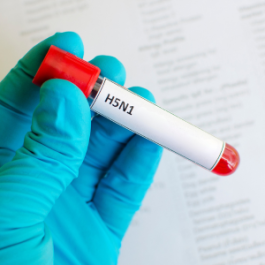
H5N1 Bird Flu
H5N1 bird flu is widespread in wild birds worldwide and is causing outbreaks in poultry and U.S. dairy cows.
- There have been several recent human cases in U.S. dairy and poultry workers.
- Current public health risk is low.
Learn how to prevent bird flu infection using the CDC resources linked below.
- Avoid direct contact with wild birds; observe from a distance. Wild birds may carry avian flu even if they look healthy.
- Avoid contact with sick or dead wild or domestic birds. Report them to University Police at (209) 667-3114 (after-hours: (209) 667-3911) or Capital Planning and Facilities Management at (209) 667-3211.
- If you must handle sick or dead birds, poultry, or other animals, wear recommended PPE.
- Do not touch surfaces or materials (e.g., bedding, litter) contaminated with saliva, mucus, or feces from birds or animals suspected of avian flu.
- Avoid unprotected exposure to infected live or dead animals or contaminated surfaces.
- Avoid unprotected direct contact or close exposure to cattle or materials potentially infected with HPAI A(H5).
- Do not consume raw milk or products made from raw milk; choose pasteurized milk.
- Properly handled and cooked poultry in the U.S. is safe to eat. Follow guidance for products from animals with known H5 infections (e.g., cattle, milk).
- There are currently no CDC travel restrictions related to bird flu.
- Clinicians can visit CDC’s avian influenza site for professional guidance.
- Public health professionals and laboratorians can visit CDC’s partner resources for guidance.
- Get a seasonal flu vaccine. It won’t prevent bird flu, but reduces risk of seasonal flu and co-infection.
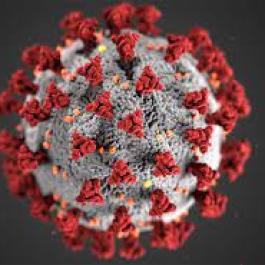
COVID-19
COVID-19 is a respiratory disease caused by SARS-CoV-2, a coronavirus discovered in 2019.
- The virus spreads mainly from person to person through respiratory droplets and small particles produced when an infected person coughs, sneezes, or talks. The virus spreads readily in crowded or poorly ventilated indoor settings.
- Illness can range from mild to severe, though not everyone infected with the virus develops symptoms.
- Adults 65 years and older and people of any age with underlying medical conditions are at higher risk for severe illness.
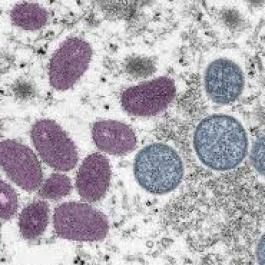
Mpox
Mpox is a rare disease caused by a virus from the same family as the virus that causes smallpox.
- Mpox symptoms are similar to smallpox, but milder.
- Mpox is rarely considered fatal.
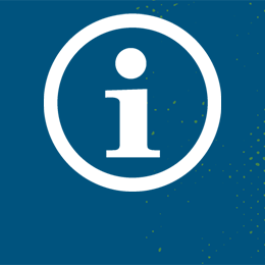
Central Valley Wastewater Data
Healthy Central Valley Together (HCVT), Cal-SuWers Network, and Biobot collect wastewater samples from certain Central Valley wastewater treatment plants for analysis of multiple infectious diseases that leave genetic markers in sewage. These results are viewable on the sites below and assist public health officials and the general public by providing an early detection tool and tracks these diseases in various communities.
The data includes detected levels of COVID-19, Influenza, RSV, Mpox, HMPV and Norovirus
Updated: November 07, 2025